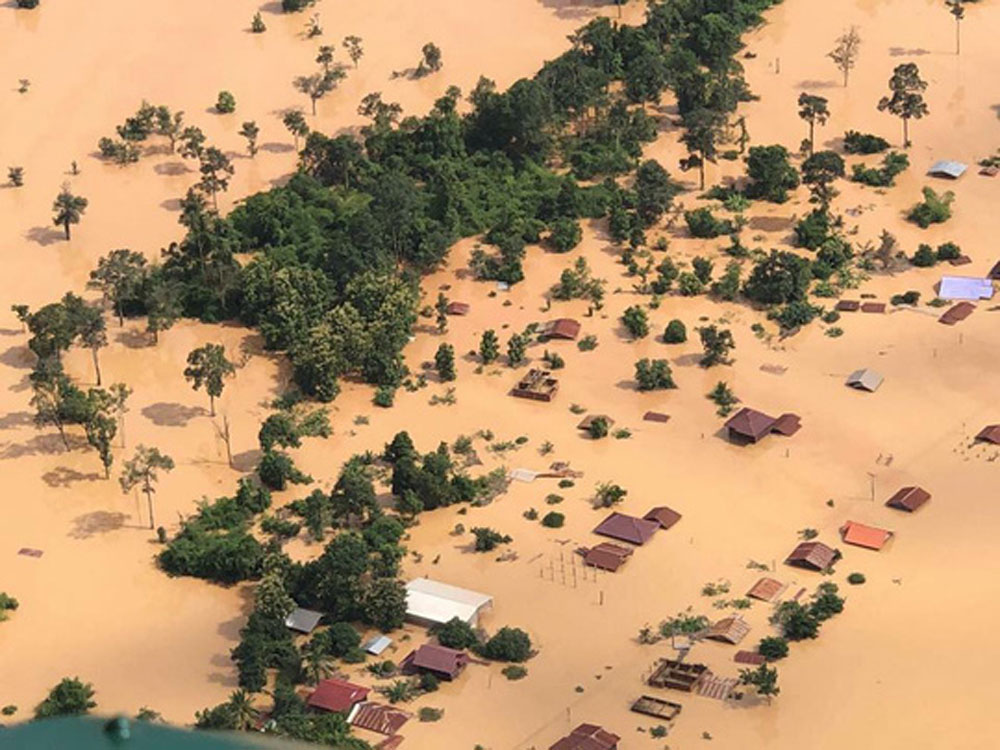[ad_1]

Photo Idsala
The hydropower dam project is located on Xe Kong river, originating from the east side of Truong Son Moutains in Thua Thien-Hue, running across southern Laos to Cambodia and flowing into the Mekong River.
The project was developed on an area of 238 hectares with a lease for 32 years.
The project includes a series of dams, water reservoirs and water pipelines which prevent and divert currents on the rivers Houay Makchanh, Xe Namnoy and Xe Pian in Champasack province.
| Officials and scientists have said that the accident at the Sepien Senamnoi hydropower dam in Attapeu, Laos will not create a “water bomb” attacking the Vietnam’s Mekong Delta. |
Nguoi Lao Dong on July 24 quoted Deputy Minister of Agriculture and Rural Development Hoang Van Thang as saying that the hydropower dam is under construction and has capacity of 1.034 billion cubic meters, not 5 billion cubic meters, as reported by some websites.
The dam has begun storing water, but it is unclear how the volume of water is stored.
Thang said Vietnamese scientists, after calculations, predicted that when the water arrives in Tan Chau and Chau Doc in An Giang province in Vietnam, the water level would be 5 cm higher than now.
“With the data about water capacity we have, the hydropower plant has stored about 500 million cubic meters of water, and it may raise the water level by 5 centimeters in An Giang, Vietnam,” Thang said, adding that agencies are keeping a close watch over the water flow.
Dao Trong Tu, an expert on the river network, said on Phap Luat TP HCM that with 500 million cubic meters discharged from the hydropower dam accident, the water level on the Cuu Long river network in Vietnam may rise by 4-5 cm.
With the distance of 650 kilometers, it would take five to six days for water from the broken dam to reach Vietnam.
The accident with the hydropower dam in Laos won’t have a big impact on Vietnam’s Mekong Delta. The Mekong River Commission is still looking for more information to make calculations.
Le Anh Tuan from Can Tho University’s Climate Change Research Institute confirmed that Vietnam will not be influenced from the accident.
“The dam break will lead to an increase in the water capacity in the Mekong mainstream. But the water capacity will not be too big, just 5 billion cubic meters,” he said.
“The volume of water, when traveling from Laos to Cambodia, will be regulated by Tonle Sap river in Cambodia. So, it won’t be able to cause floods in Vietnam’s Mekong Delta when it reaches Vietnam,” he explained.
RELATED NEWS
Hydroelectric plants ready for flood season
Hydropower dams affecting agricultural production in Mekong Delta
Nam Ha
[ad_2]
Source link
